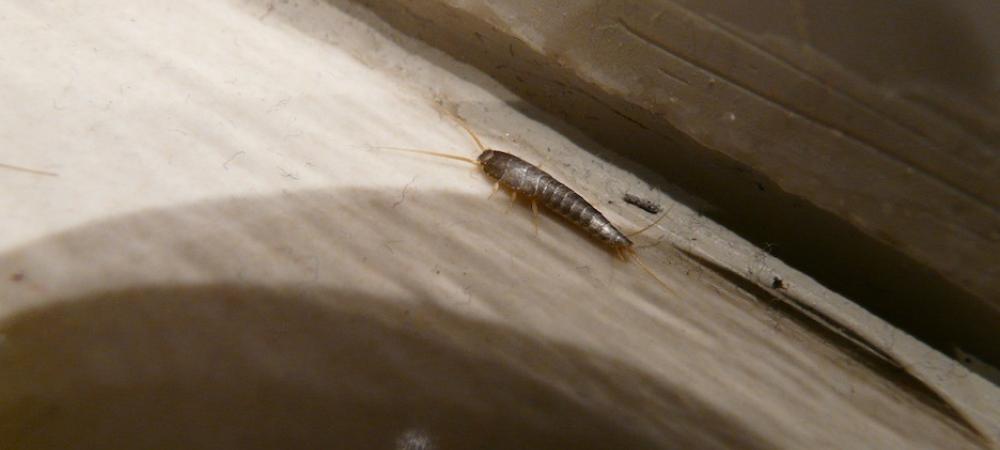Silverfish in North Carolina: Identification, Prevention, and Removal

As a homeowner in North Carolina, the sight of tiny, fast-moving insects skittering across your bathroom or kitchen floor can be unsettling. One common culprit? Silverfish. These pesky invaders thrive in the humid environment found in many parts of the state, especially in homes located in coastal areas like Wilmington or swampy, wooded regions like Raleigh-Durham. While silverfish are not the most dangerous pests, their presence can lead to nuisance problems and damage to your home. In this guide, we’ll cover everything you need to know about silverfish: how to identify them, common types found in NC, their risks, prevention tips, and how to get rid of them.
Identifying Silverfish
Silverfish are small, wingless insects known for their teardrop-shaped bodies and silvery-gray color. They have long antennae, a sleek, fish-like appearance, and move in a quick, wriggling motion—hence their name. Adults are typically between ½ to 1 inch long, and they are most active at night, making them elusive during daylight hours.
You’re likely to spot silverfish in damp, dark areas like:
- Bathrooms: Under sinks, bathtubs, or shower corners.
- Kitchens: Cabinets, pantries, or beneath appliances.
- Basements: Especially in areas prone to moisture, such as laundry rooms.
- Attics: If humidity is present, silverfish may be hiding in cardboard boxes or insulation.
Are Silverfish Dangerous?
The good news is silverfish don’t pose a direct health threat to humans or pets—they don’t bite, sting, or spread diseases. However, they can be a nuisance due to their diet. Silverfish are known for feeding on starchy materials and items high in carbohydrates, such as:
- Books and paper products
- Glue and adhesives
- Fabrics like linen and cotton
- Stored food (like cereal, pasta, and flour)
Over time, silverfish can damage your personal belongings, including books, important documents, wallpaper, and even clothing. Their droppings and shed skins may also contaminate food items if they gain access to your pantry.
Common Types of Silverfish in North Carolina
While several species of silverfish exist, the most common species homeowners in North Carolina encounter include:
- Common Silverfish (Lepisma saccharinum): These are the most widespread species, identifiable by their silvery sheen and long, bristle-like tails. They prefer high-humidity areas, making NC’s warm, moist summers ideal for their survival.
- Gray Silverfish (Ctenolepisma longicaudata): Slightly larger than the common silverfish, gray silverfish are often found in attics or crawl spaces where humidity levels are high.
- Firebrats (Thermobia domestica): Though not technically silverfish, firebrats are closely related. They thrive in warm environments like furnace rooms and hot water heater areas, and you may encounter them in homes across the Piedmont and the Sandhills regions.
How to Prevent Silverfish in North Carolina Homes
Given North Carolina’s warm, humid climate, it’s essential to take proactive steps to prevent silverfish from establishing themselves in your home. Here are some effective prevention tips:
- Control Humidity: Silverfish thrive in damp environments. Use dehumidifiers in areas like basements, attics, and bathrooms to keep moisture levels low. Ensure proper ventilation in these spaces, especially during humid months from May to September.
- Seal Cracks and Gaps: Silverfish can enter your home through small cracks in foundations, around doors, and through windows. Regularly inspect your home’s exterior for any gaps and seal them with caulk or weatherstripping.
- Declutter: Reduce silverfish hiding spots by decluttering storage areas. Avoid leaving cardboard boxes or piles of paper in basements or attics, and use plastic containers to store items instead.
- Proper Food Storage: Store dry goods like cereal, flour, and pet food in airtight containers. Silverfish are attracted to food sources, and proper storage can help keep them out of your pantry.
- Regular Cleaning: Vacuuming regularly, especially in hard-to-reach places like behind appliances or under furniture, can remove silverfish eggs and prevent their population from growing.
How to Get Rid of Silverfish
Getting rid of silverfish requires a combination of proper cleaning, home maintenance, and sometimes pest control treatments. Here's a step-by-step guide to effectively eliminate silverfish from your home:
1. Reduce Humidity
Silverfish thrive in moist environments. Lowering humidity levels in your home is one of the most effective ways to deter them.
- Use dehumidifiers in damp areas like basements, bathrooms, and attics.
- Ventilate rooms properly by opening windows or using exhaust fans, especially in areas like the bathroom and kitchen.
- Fix leaky pipes or faucets to prevent water buildup.
- Install moisture barriers in crawl spaces or basements if necessary.
2. Clean Regularly
Silverfish are attracted to dust, crumbs, and organic matter, so keeping your home clean can make it less appealing to them.
- Vacuum frequently, especially in corners, under furniture, and in hidden areas like closets and cabinets.
- Remove clutter such as old books, magazines, cardboard boxes, and newspapers, as these are common hiding spots and food sources for silverfish.
- Wipe down surfaces to remove dust and food particles, especially in kitchens and pantries.
3. Seal Entry Points
Silverfish can enter your home through tiny cracks and gaps.
- Inspect and seal cracks in walls, baseboards, and foundations.
- Install weatherstripping around doors and windows to block their entry.
- Seal gaps around pipes and other entry points with caulk or foam insulation.
4. Proper Food Storage
Silverfish are drawn to starchy materials like paper, glue, and dry foods. Proper food storage can help eliminate their food sources.
- Store dry goods such as cereals, flour, and pet food in airtight containers.
- Remove old or damaged items from pantries and closets to minimize their food supply.
5. Use Natural Remedies
If you prefer natural solutions, these methods can help eliminate silverfish:
- Diatomaceous Earth (DE): Sprinkle food-grade DE along baseboards, in cabinets, or other infested areas. DE is harmless to humans and pets but kills silverfish by dehydrating them.
- Cedar Oil: Silverfish dislike the smell of cedar, so placing cedar blocks or applying cedar oil in infested areas can deter them.
- Lavender Oil: Lavender is another natural silverfish repellent. Spray diluted lavender oil around areas where silverfish are present.
6. Apply Insecticides
If the infestation persists, using insecticides can help get rid of silverfish.
- Boric Acid: This is an effective insecticide that kills silverfish. Apply it in cracks, behind appliances, and in dark corners. Be cautious when using boric acid around pets and children.
- Silverfish Traps: Sticky traps baited with food attract and capture silverfish. Place these traps near infested areas like bathrooms or basements.
7. Call a Professional Pest Control Service
For severe or recurring infestations, it may be best to contact a professional pest control service. Pest control experts can identify the source of the infestation and provide targeted treatments to effectively eliminate silverfish.
As a local pest control company, our team at Triangle Pest Control is familiar with the region's climate and the best techniques to manage silverfish infestations in homes. Our professional exterminators can offer both immediate relief and long-term prevention.



